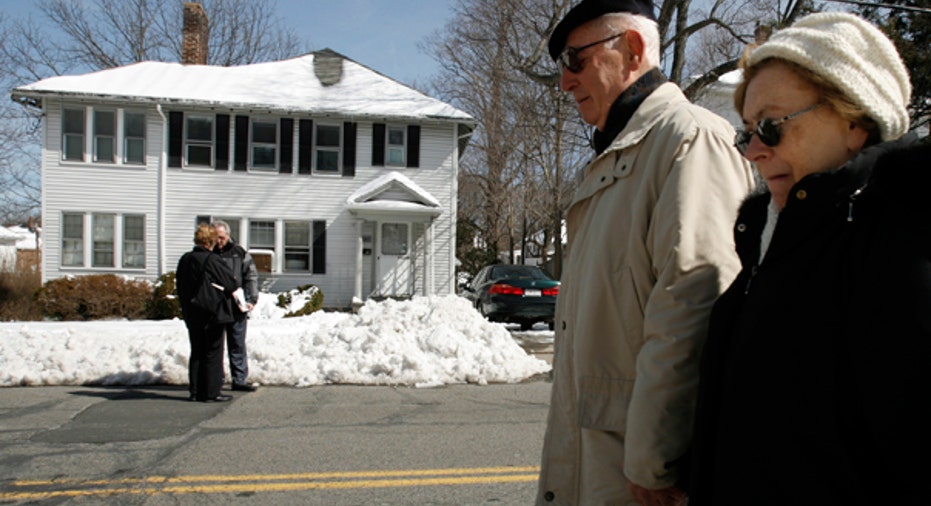Remodeling Tips for Boomer to ‘Age in Place’

“The Boomer” is a column written for adults nearing retirement age and those already in their “golden years.” It will also promote reader interaction by posting e-mail responses and answering reader questions. E-mail your questions or topic ideas to thefoxboomer@gmail.com.
When it comes to growing old, many baby boomers want to age in place.
We don’t want to move out of the home that we raised our children in, ate countless holiday meals, opened birthday presents and waved in the doorway of as our children left for school. But physical setbacks associated with getting older can make independent living more challenging with things like stairs and other commonplace structures becoming potential hazards.
To help boomers stay in their home, more companies and organizations, including the National Association of Home Builders (NAHB), are offering assistance to make homes more livable and safe as they age.
The NAHB’s program, the Certified Aging in Place Specialists designation program, is a three-day course that teaches contractors and remodelers techniques and strategies for making modifications to homes. According to Executive Director Therese Crahan, the course covers market growth, target demographics and a general overview of potential projections and upgrades.
“A good example is if you are going to widen a doorway so that a wheelchair can get by, how wide do you have to make it? If you have to put a ramp on the house, how is that done? We review what kind of lighting to use, stairs, elevators, and chair lifts, and detail what is appropriate to use and what is not.”
I also had a chance to speak with Stephen Melman, director, economic services of the NAHB to explain a little bit more about this program. Here is what he had to say:
Boomer: What are some home remodeling ideas your specialists focus on when helping boomers stay in their homes?
Melman: We expect by the year 2020, almost 45% of all U.S. households will include someone that is at least 55 years or older. And when asked, most of this age demographic would say they prefer to stay in their community where they have friends and family close and are familiar with the surroundings. To make this happen, most of the time they need to adapt their home—that is where remodelers come in.
We have remodelers reporting back to us more often saying they are getting requests from families to retrofit their homes. The cost of these upgrades vary, some are expensive, while others like grab bars in the bathroom are less costly and very helpful. Other upgrades include higher toilets, and curbless showers and widened doorways. Curbless showers are great retrofit for aging in place, but they can also make sense for families to avoid having kids stub their toes getting into the shower. Along the same lines, ramps, which enable wheelchairs easy access in and out of a home, are also good for strollers. Some of these universal access features that need to be retrofitted can make financial sense for all households because they can add to the value of the home.
Task lighting is a vast improvement in lighting for individual working areas. Other projects to keep people in their homes as they age include adding a bedroom at the entry level to avoid having to navigate stairs and installing non-slip floors.
Some new homes have a pantry built directly underneath a closet on the second floor so that it can be retrofitted as a residential elevator later in life at a reasonable cost. When it comes to new construction, I think what you will see is this group looking more toward one-story homes. An important thing to keep in mind when making these type of home renovations and retrofitting is that no feature should suggest the look of a nursing home or hospital setting. It still needs to be appealing—these are people homes, and they want it to feel that way.
Boomer: How do I begin to plan for aging in place?
Melman: What we have noticed is that 67% of the people we work with are ages 55-64, and 63% of our requests are from those older than 65. It seems people are waiting until the last minute to make changes to their homes, but they understand these changes will improve their lifestyle and allow them to remain in the home.
Retro-fitting decisions need to be a value decision, not an investment decision—you are not going to make a whole lot of money by putting in a bedroom and then selling the house in two years.
A lot of people don't have the equity they use to in their homes and home equity financing has disappeared to a great extent so whatever renovations you do make, you are going to be paying for it out of your current savings and income as opposed to some sort of a loan. People need to really plan what they need and to get a couple of estimates as to how much it is really going to cost and then go forward. Once the homeowners make the decision, the planning stage is much more in depth.



















